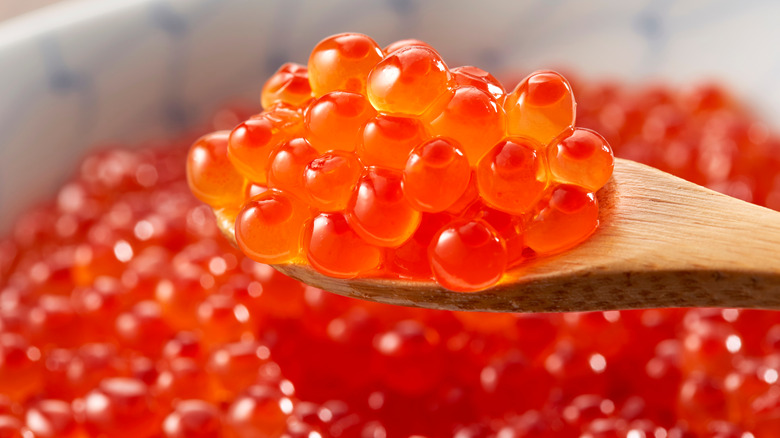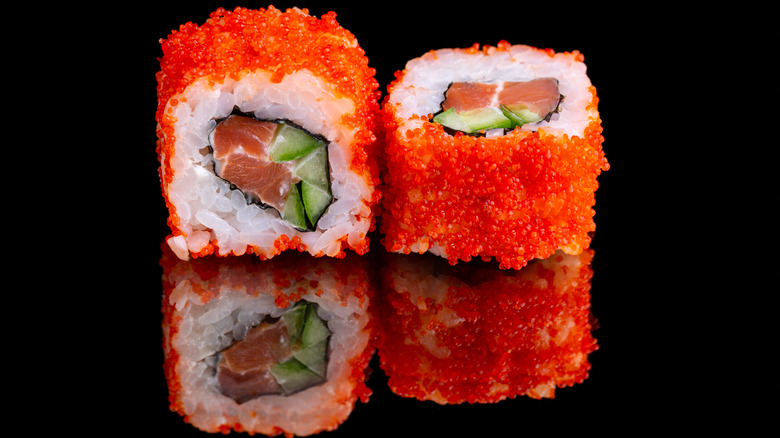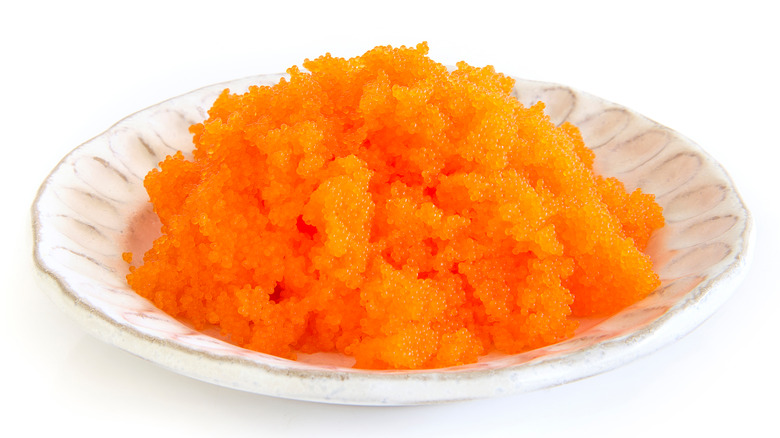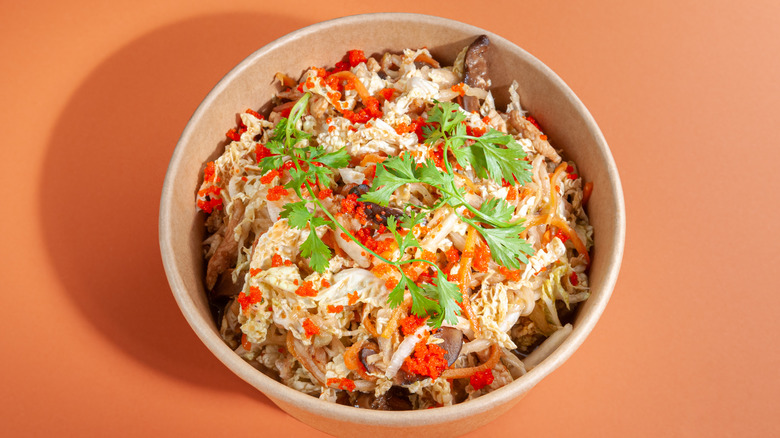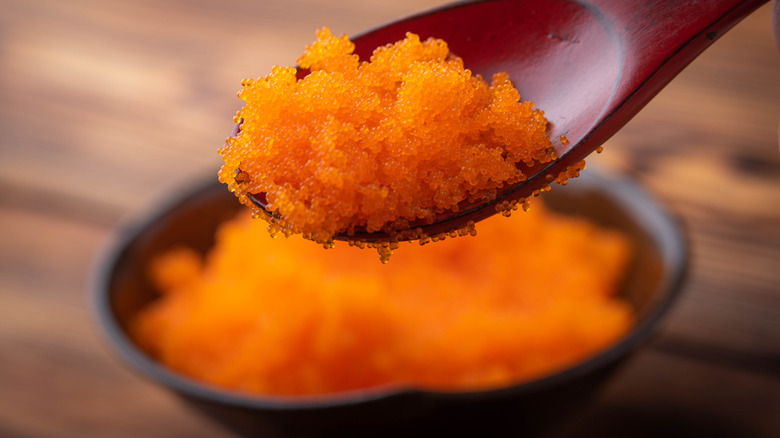The Difference Between Masago And Tobiko
To understand the differences between masago and tobiko, let's start with the basics. Masago is also known as capelin fish roe, and tobiko is known as flying fish roe, and roe is a general term for fish eggs. If you're wondering how roe differs from caviar, it all depends on which family or type of fish the eggs come from (hence all the different names). Caviar comes from the sturgeon family of fish and is often salted, and it's considered a delicacy — and priced as such — since it's harder to find. Roe is more commonly found, which is why you can find it at pretty much any sushi or Japanese restaurant, without costing you an arm and a leg (via Caviar Lover).
So, masago is roe that comes from the capelin fish, and tobiko is roe that comes from flying fish. That's the first difference to note between the two! Technically, there are a myriad of different kinds of roe around the world, since there is a wide variety of fish, and their respective roe range in size and color.
What do masago and tobiko taste like?
As you might imagine, since masago and tobiko are something from the sea they taste slightly briny. The roe are small and smooth but provide a slight crunch, and their salty, sea-like flavor makes them unique — though the taste is mild and not at all overpowering, which is why it is commonly used as a sushi roll topping.
While the tastes of masago and tobiko are very similar and the two are often confused, it should be noted that there are key differences between what you're really tasting when you order one or the other. Masago is actually smaller and much less expensive than tobiko, which is why you might see it more often on the menu. Especially noteworthy is that while tobiko has a natural, bright red coloring, masago is much duller in color naturally and is typically dyed in order to resemble the brightness of tobiko and make it more visually appealing. It is often said that masago is slightly less crunchy in texture than tobiko (via Healthline).
Is masago or tobiko healthier than the other?
Also according to Healthline, masago is both low in calories but high in nutrients, making it relatively healthy compared to a lot of foods. It is also found naturally and typically not processed, which is always an extra point on the health scale. Similarly, Izzy Cooking notes that "tobiko is a good source of proteins, omega-3 fatty acids, and selenium, a mineral responsible for the production of antioxidants." But just be careful when consuming both masago and tobiko: Each type of roe has somewhat high levels of cholesterol, so you'll want to eat each in moderation.
Because they are so similar in taste and nutrient makeup, and because any nutritional difference between either roe would be astoundingly small, there is not much difference in health benefits between the two. It could be argued that the level of nutrients in tobiko might add to how covetable it is in comparison to masago, but generally speaking, both are pretty similar in what they contain.
Is there a different way to eat masago and tobiko?
You've likely seen both masago and tobiko atop sushi rolls at Japanese restaurants. They add vibrancy to any sushi roll or dish with their bright colors and an intriguing smooth crunch of texture. Though sushi and sashimi are perhaps the most popular ways to present and incorporate masago or tobiko, there are certainly other ways to use them.
Instead of simply topping a pre-made sushi roll with masago or tobiko for the color and texture elements, sometimes the roe is incorporated within the roll itself. Also, masago is sometimes used to create a creamy sauce that's used over Japanese noodles, aptly named "masago sauce," (via Izzy Cooking).
Rice bowls, with their popular mixing of many ingredients at once, are also popular for using masago or tobiko. And specifically, you might find tobiko atop uramaki (a particular type of sushi roll that has the rice spiraling inward instead of the traditional, outer-wrapping of rice) or within a tasty California roll (via How Daily).
Where to buy masago and tobiko?
Yet another benefit of both masago and tobiko is that both can be found pretty easily, whether in-person or online. Specialty food stores with a focus on global or Asian ingredients will likely carry masago or tobiko, but you can also find masago or tobiko at big-name stores such as Whole Foods or Walmart. Additionally, you can purchase both masago and tobiko easily online, from retailers like Amazon or more specific local stores.
Both of the fish roe are typically priced by the ounce, since a little goes a long way. Plus, the more you purchase (per ounce), the less overall you will pay. This masago from Gourmet Food Store, for example, is priced at $6.61 per ounce, and tobiko is generally in the same price range, depending on amount and color variation. If you're looking to purchase a lot of masago or tobiko at once, certain retailers will sell much larger jars (around 17 ounces), for a price that ultimately saves you the most money in the long run!
